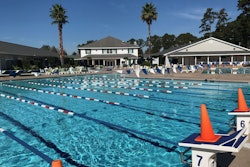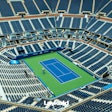Source: Center for Public Health Law Research
October, 2017, Philadelphia — Laws aimed at addressing concussions in youth sports help reduce the rates of recurrent concussions, according to a new study published today in the American Journal of Public Health.
The study finds a significant decrease in the rate of recurrent concussions among high school athletes — meaning the athlete had experienced at least one previous concussion, which are a type of traumatic brain injury.
The trend toward decreasing recurrent concussion rates was first seen a little more than two and a half years after the enactment of now-common state-level laws that address removal from play, requirements for clearance to return to play after a concussion, and annual education of coaches, parents and athletes.
Using data from LawAtlas and the High School Report Injury Online between the 2005-2006 and 2015-2016 academic years, the researchers examined the statistical association between the implementation of state laws addressing concussions and actual concussion rates in high school athletes reported by athletic trainers. The study focused on nine common high-school sports: boys’ football, basketball, soccer, baseball, and wrestling; and girls’ basketball, soccer, softball, and volleyball.
While the rates of recurrent concussions decreased after 2.6 years, the researchers from the Center for Injury Research and Policy at Nationwide Children’s Hospital, Temple University’s Beasley School of Law, and the Colorado School of Public Health at the University of Colorado find that rates of all concussions actually went up in the years leading up to when the laws became effective, and in the year immediately following a law’s effective dates.
“This is what we expected to see,” explained Jingzhen Yang, PhD, MPH, the study’s lead author and principal investigator at the Center for Injury Research and Policy at Nationwide Children’s. “Most TBI laws require athletes, athletic trainers, and/or coaches to report all suspected and/or actual TBIs and concussions. So what happens is that after a law is implemented you see an initial increase in concussions most likely because more people become aware of the symptoms and signs of concussion. Many concussions that were going unreported or undiagnosed before are finally starting to get reported and diagnosed.”
During the 11-year period studied, the researchers find a national estimate of nearly 2.7 million concussions, or 671 concussions per day among US high school athletes participating in at least one of the nine sports included in the study.
Concussions were more frequently reported during competitions rather than during practice. Football accounted for roughly half of all reported concussions in this study. In gender-comparbale sports, girls’ sports had consistently higher concussion rates than boys’ sports over time.
There are now youth sports concussion laws in every state and the District of Columbia. Most of the state laws are modeled after Washington state’s law, which was the first in the nation, enacted in 2009. Explore youth sports concussion laws at LawAtlas.org
“This study is the first to marry the data from Dr. Dawn Comstock’s large, national high school sports injury surveillance system with our work published on LawAtlas.org.” said Hosea H. Harvey, JD, PhD, an associate professor at Temple University’s Beasley School of Law, and a co-author of the study.
“Previous studies of youth sports concussion laws have focused primarily on content, goals, structure and implementation, or have been limited to a few or single states,” Yang said. “It is important for us to understand howthese laws are actually associated with declining recurrent concussion rates, and we hope to see more research in the future that goes even further to measure how variations in language, provisions, interpretation and implementation of these laws could impact public health.”
This research was funded by a grant from the Robert Wood Johnson Foundation’s Public Health Law Research program.
The Center for Public Health Law Research is based at Temple University’s Beasley School of Law. It supports the widespread adoption of scientific tools and methods for mapping and evaluating the impact of law on health. Learn more at http://publichealthlawresearch.org.





























